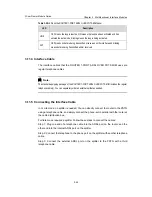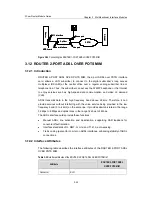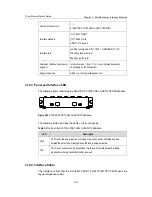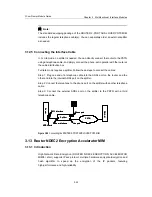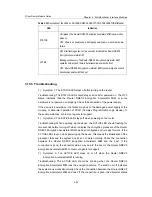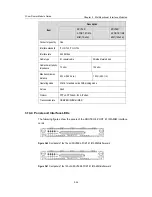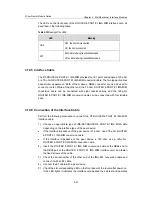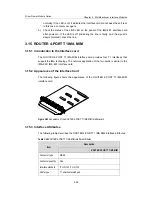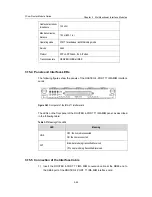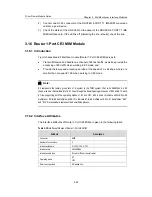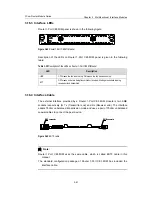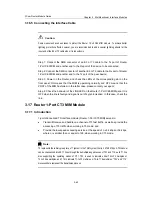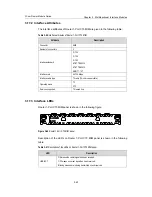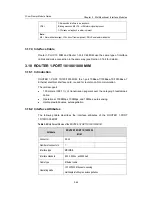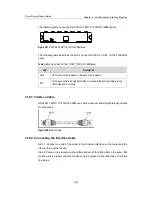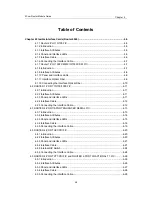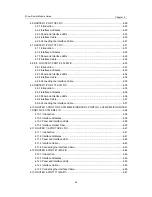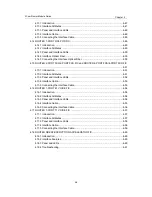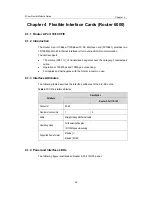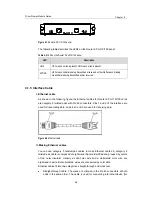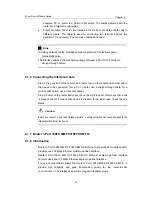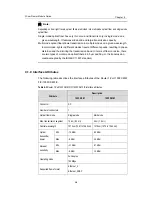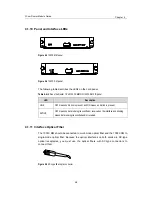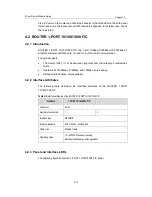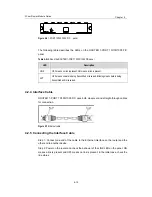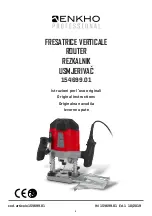
3Com Router Module Guide
Chapter 3 Multifunctional Interface Modules
3-62
3.16.5 Connecting the Interface Cable
Caution:
Some measures have been taken to protect the Router 1-Port CE3 MIM module. To achieve better
lightning protection effects, however, you are recommended to add a special lightning arrester at the
input end of the E3 or T3 cable when it is led outdoors.
Step 1: Connect the SMB connector of an E3 or T3 cable to the Tx port of Router
1-Port CE3 MIM and another end to the Rx port of the device to be connected;
Step 2: Connect the SMB connector of another E3 or T3 cable to the Rx port of Router
1-Port CE3 MIM and another end to the Tx port of the peer device;
Step 3: Power on the Router, and check the LEDs of the corresponding slot on the
front panel: ON means that the MIM is operating normally and OFF means that the
POST of the MIM has failed. In the latter case, please contact your agent;
Step 4: Check the behavior of the LINK LED on the Router 1-Port CE3 MIM panel. It is
OFF when the line is faulty and signal is out of synchronization. In this case, check the
link.
3.17 Router 1-Port CT3 MIM Module
3.17.1 Introduction
1-port channelized T3 interface module (Router 1-Port CT3 MIM) serves to:
z
Transmit/Receive and handle one channel of T3 fast traffic, as well as provide the
accessing of T3 traffic when working in T3 mode; and
z
Provide the low-speed accessing service at the speed of n x 64 kbps or 56 kbps,
where n is smaller than or equal to 128, when working in CT3 mode.
Note:
T3 represents the tertiary group rate of T system in the TDM system, that is, 44.736 Mbps. A T3 channel
can be channelized into 28 T1 lines through the demultiplexing processes of T23 and T12, each T1 line
also supporting the operating modes of CT1. T23 is used to indicate either T2-to-T3 multiplex or
T3-to-T2 demultiplex, and T12 to indicate T1-to-T2 multiplex or T2-to-T1 demultiplex. “T23” and “T12”
discussed here represent the demultiplex process.


